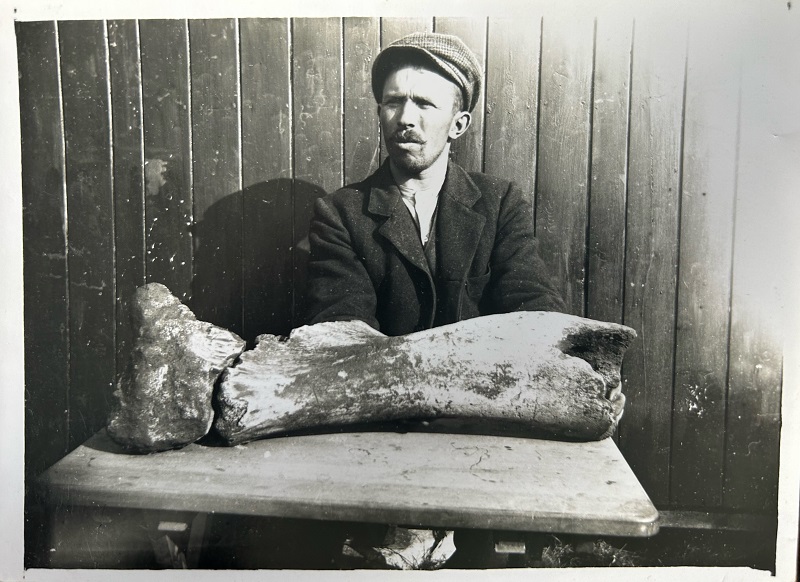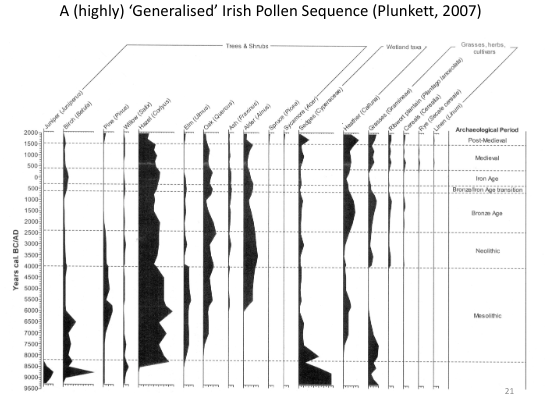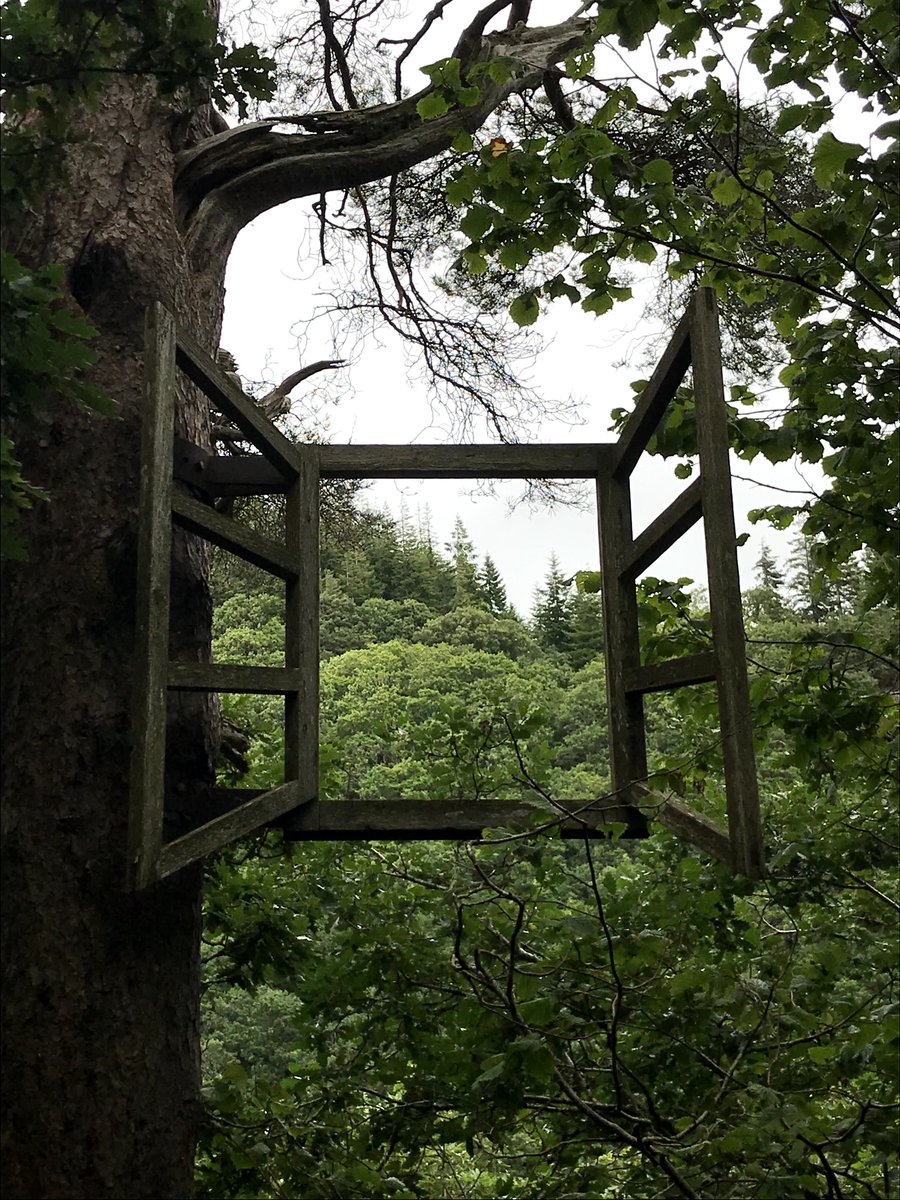#IrishCaveBones 1/n Day 2: @RuthFCarden here again. Hope ye grab a mug or choice beverage, let's see how long I go with tonight's thread. Tangents are probably a given as it's all so interesting. Open to questions throughout, I'll do my best to answer them once finished.
2/n We need to go back to the start of cave exploration in Ireland, the originals so to speak, to put into context what was done and how it effects our current/future cave excavation research. There are over 300 caves in Ireland, majority of them are found in limestone rock.
3/n There are large numbers of caves found in numerous counties in Ireland - Tipperary, Cork, Waterford, Clare, Kerry, Sligo and so on. Caves are really important habitats in their own right too - bats roost in them, hibernate there over winter & we find bat bones in them too...
4/n.... I have identified lesser horseshoe bat bones from Co. Waterford caves for example, but they are now limited in range to the west of Ireland (Clare county being a stronghold). Bat bones are so light and small though, we cannot radiocarbon date them, yet. I hope this will
5/n will change in the future, as to know when we had bats using caves in the past would be exciting and then why their ranges changed to modern times. But back to caves, inside caves the temperature doesn't fluctuate madly (why bats like them), and they are good at preservation
6/n of animal bones - birds, mammals, bats, fish, amphbians etc. Early naturalists in Ireland, and explorers, discovered Irish caves had bones within them and were remarkably preserved in general. Amongst these early cave explorers was Richard J. Ussher. Ussher was an expert in
7/n birds and used to go all over Ireland in the late 1800s bird watching and collecting bird eggs. Ussher was born in Cappagh, Co. Waterford in 1841 (died 1913), and he first went to Ballynamintra cave, Co. Waterford to excavate in 1880...
8/n ... Ussher excavated with a small team, using pieces of string to outline 2x2ft squares in the cave sediment. He took quite detailed notes in his excavation notebook and excavated some 2,500 animal bones. Some of the bones, when I was doing the reassessment of IDs were
9/n wrapped up in peices of newspapers of those days-interestingly these survived in the Museum collections, some relatively untouched since they came out of Ussher's excavations in 1880s. Remarkably still intact (strong paper!) and ink still readily visible from April 12, 1880! 

10/n Adams also was a cave explorer/naturalist in Ireland and excavated Shandon cave, Co. Waterford, published a paper in 1876. Shandon cave was located in a quarry, and sadly largely doesn't exist anymore. A small quantity of animal bones were excavated and still in the Museum's
11/n collections, including evidence of wild horse (misidentified as red deer originally) pre the last Ice Age. Imagine wild horses galloping across Waterford- more on that later in the week. But Shandon produced evidence of mainly pre Ice Age animals back to some 45,000 years!
12/n As people began to search for more 'bone caves' back in the late 1800s, more and more were found, typically in the limestone bedrock covering much of the southern half of our island. But there are limestone caves in Co. Fermanagh too, where Plunkett excavated Knockninny cave
13/n in 1879. But Ussher stood out in his diligent methods of excavation of 'bone caves', recording everything in great detail and keeping records, still existing today in his excavation notebooks. Ussher and his team largely took over excavating many caves in his lifetime
14/n until his death at the grand age of 72 years old, in 1913. He still kept his interest in birds, it was after all bird bones in the caves that first drew him to cave excavation. With his Ballynamintra cave excavations, there were a lot of misidentified bones (but they didn't
15/n have the same amount of knowledge we have today for identification, and the excavators were largely jobbed with the excavation of bones from caves, and gross anatomists with the identifications)... below, we see pig toe bones mis-IDed as red deer. 
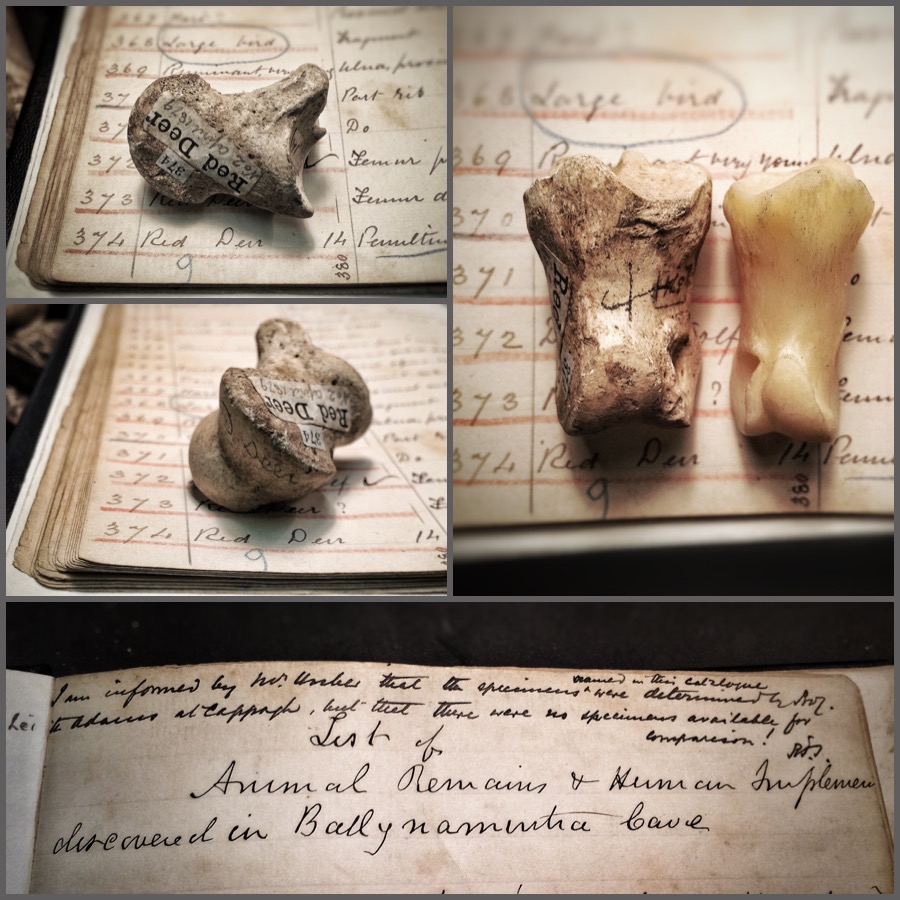
16/n Another wrapped set of bones with older wrapping can be seen in these photos below... these little discoveries are interesting to find amongst a box/bag of cave bones. The original labels are of kept as part of the museum archive for the cave bones collections. 


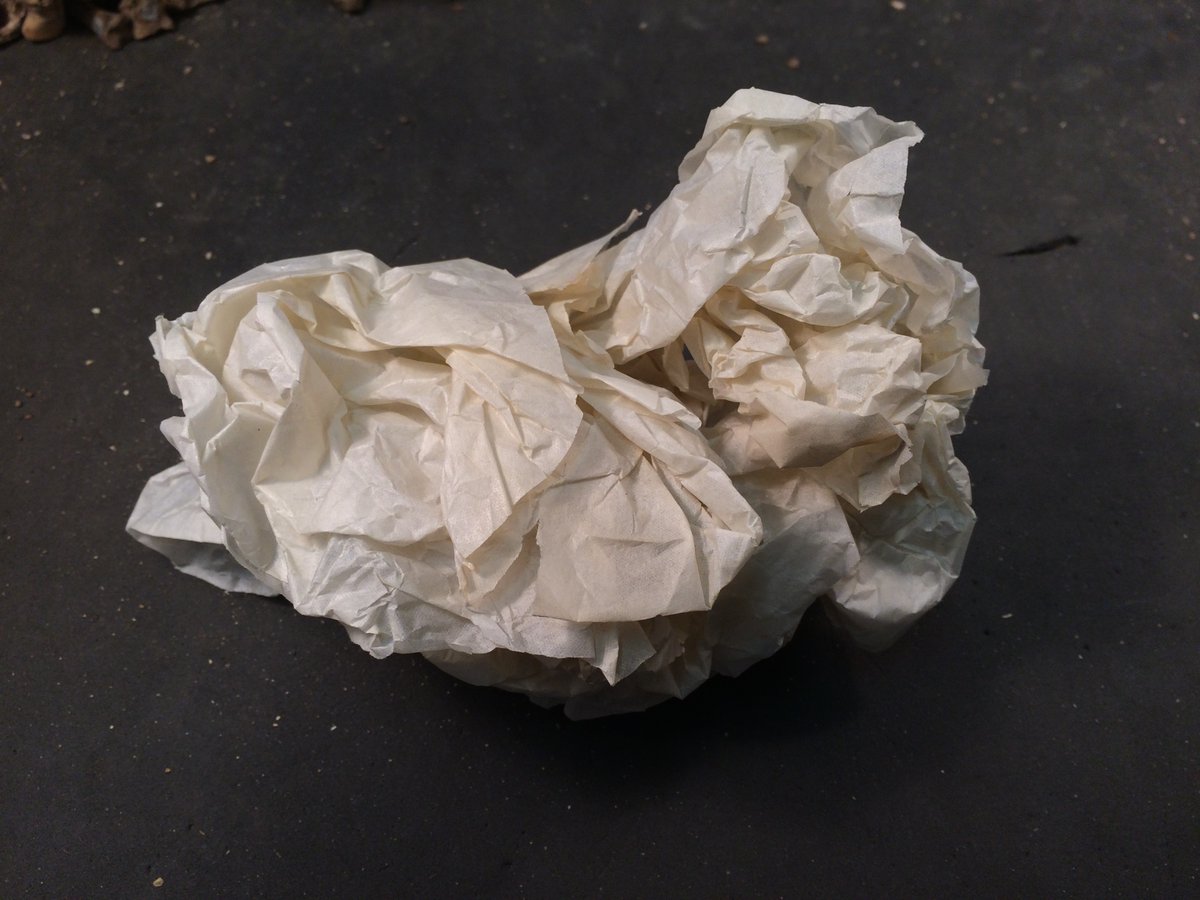
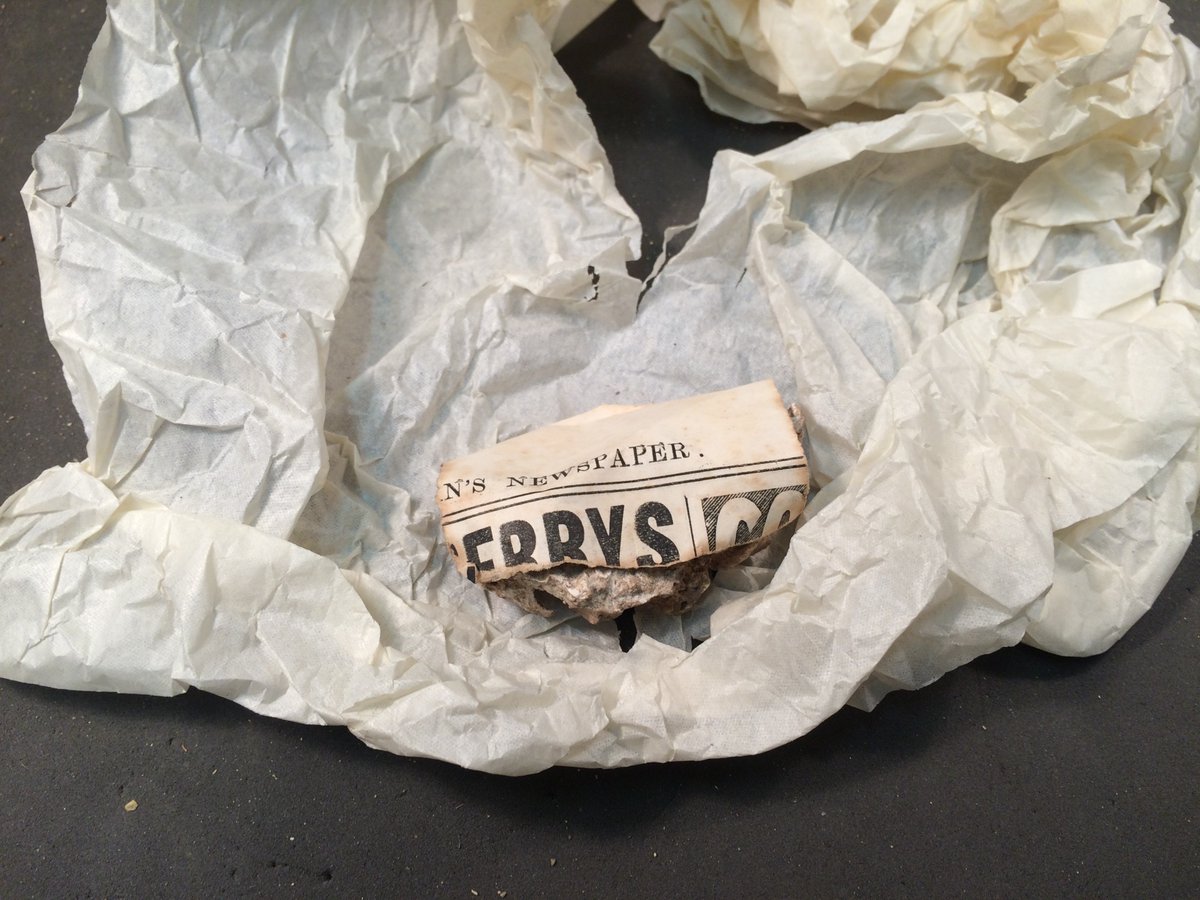
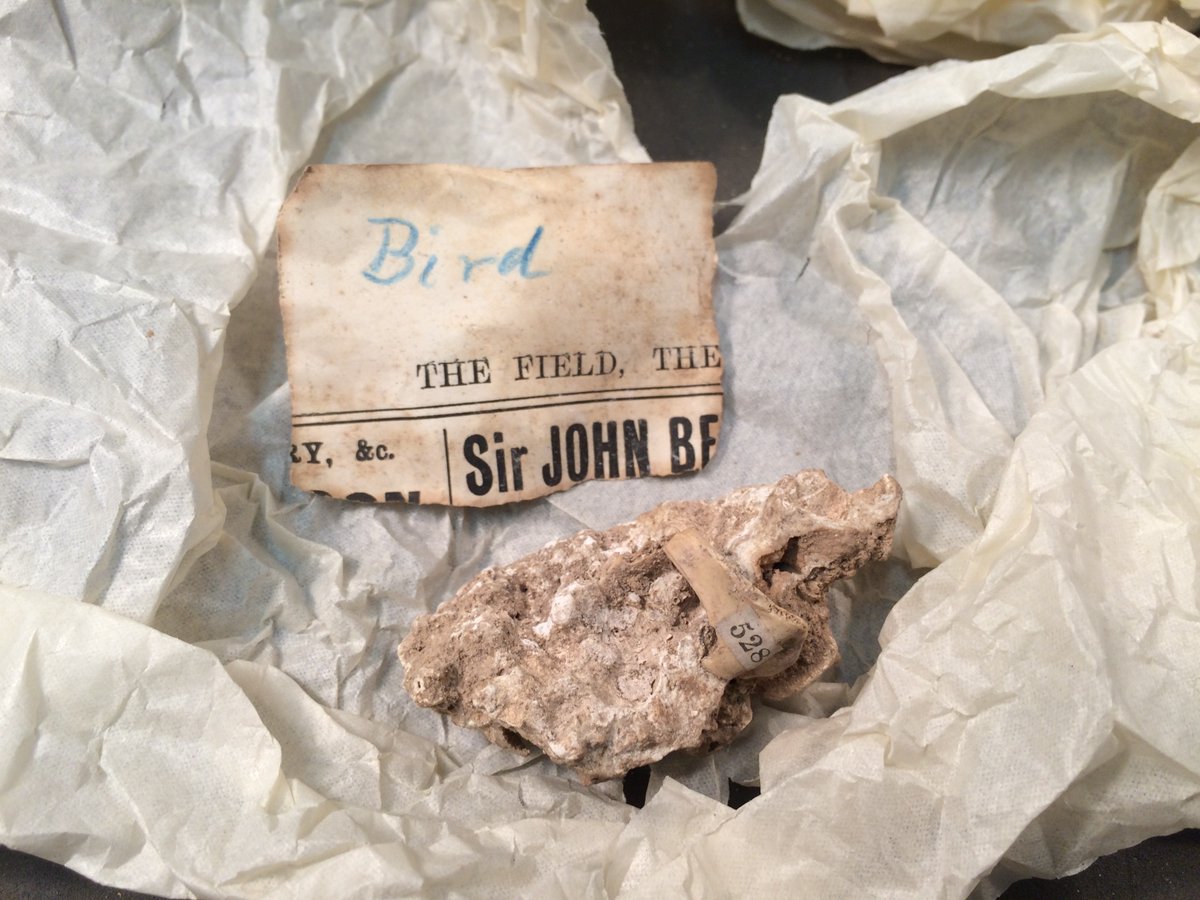
17/n Ussher also excavated the Edenvale cave complex (5 caves) between 1902-1904, and he sent about 70,000 bones to the National Museum...though not all were kept as some were fragmented bones. Ussher and his team were busy in those two years!
18/n not only did they send the animal bones from the caves, they also at times sent cave sediment with insect remains incased, still in same state today such as these beetle wing remains in cave sediment from Edenvale caves. 
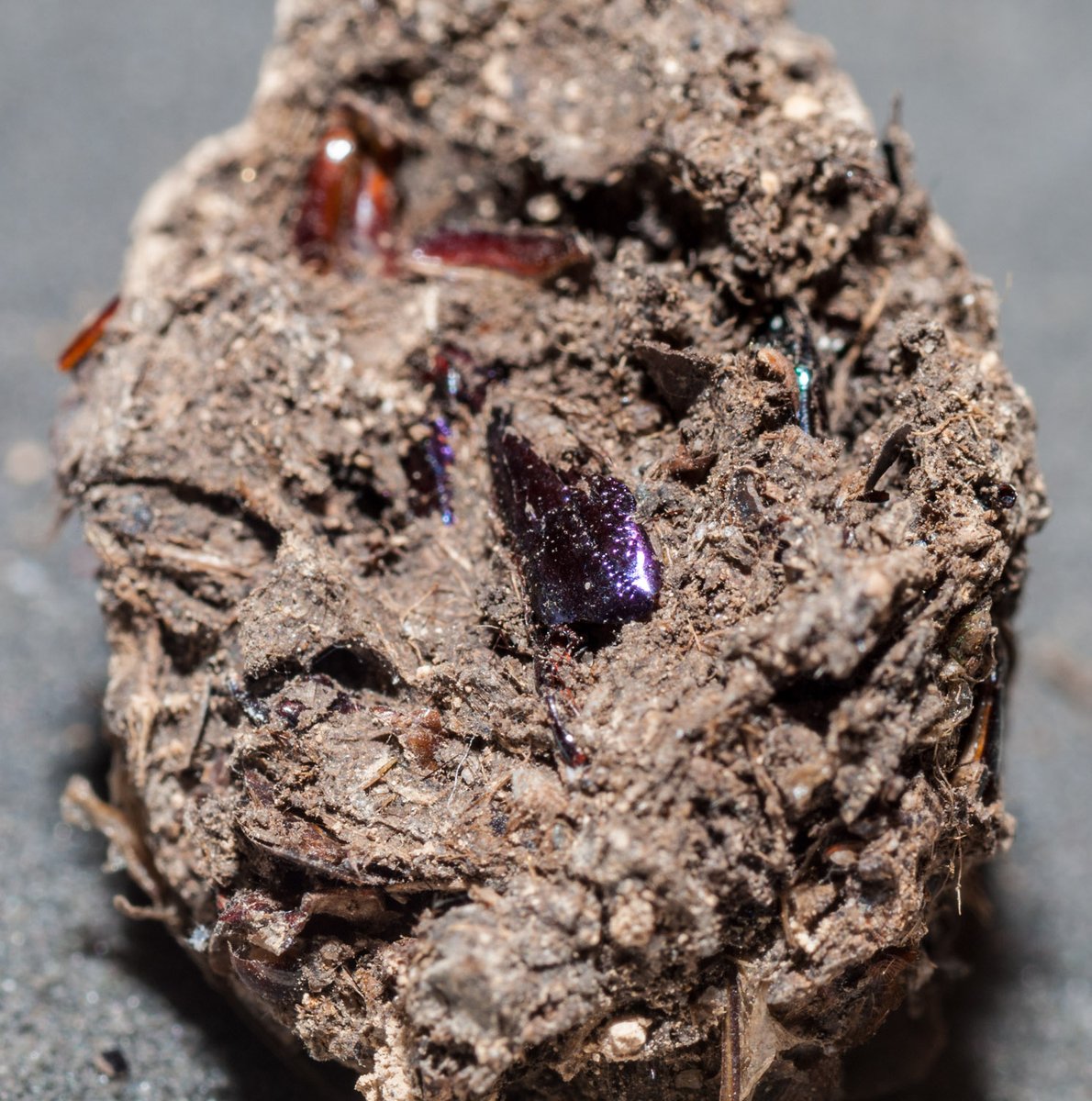
19/n Other containers were used to house various sized animal bones during cave excavations - things readily to hand such as tobacco tins were popular to house small bones. A small protective tin with a label. Really gives an insight into what tobacco was popular amongst workers 

20/n Linen bags were used a lot at Kilgreany cave excavations, in this case holding horse teeth. Essentially, at the time, the workers on site were opportunistic in what was available to hold animal bones during cave excavations. (I do love the label on this bag too). 
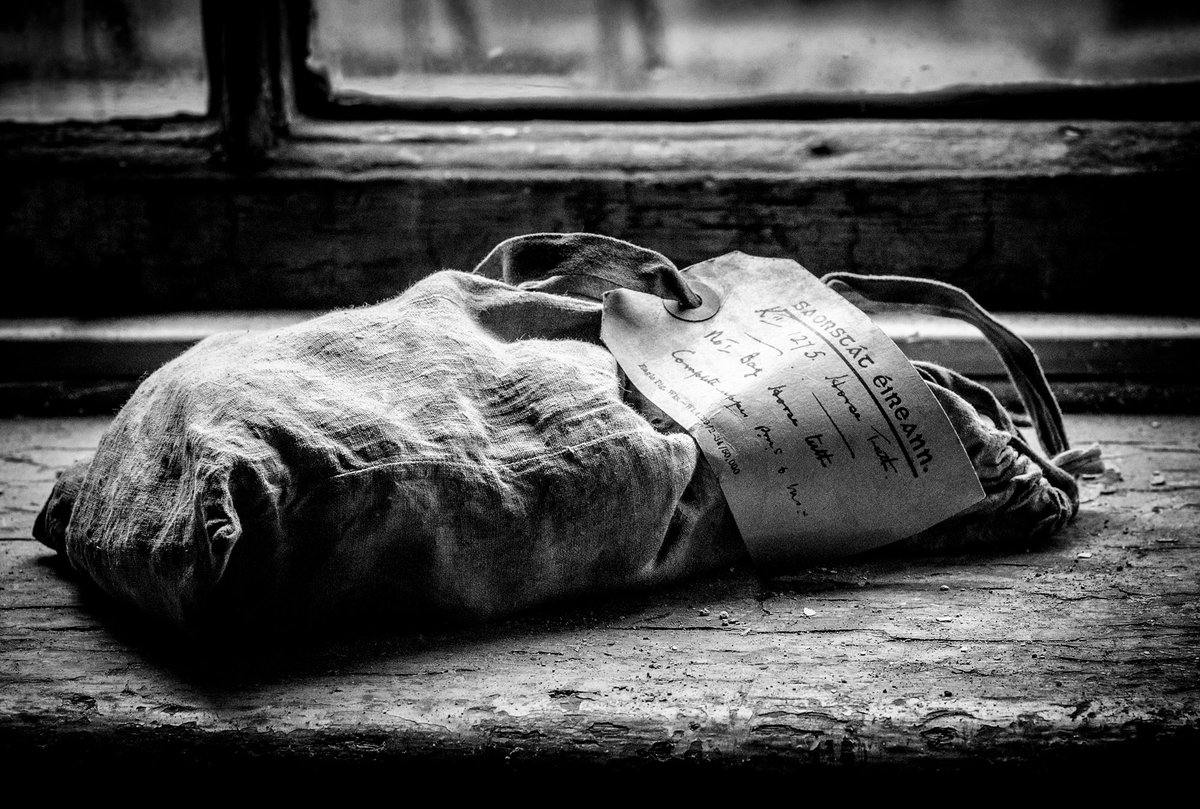
21/n (and that was the first tangent of tonight's thread - the containers used to hold cave bones). Back to caves, so we know and Ussher and others knew that limestone caves in Ireland preserve and conserve animal bones well and they hold secrets of Ireland's past.
22/n Caves are good for bats (and their bones) and other animals too....(we will get more into those on Day 4). But Ussher and his crew nailed it during excavations and between 1904 and 1913, he excavated Castlepook cave, Co. Cork. This cave is a complex cave, with many passages
23/n and chambers, large and small and very tight confined spaces. Ussher in 1904, was visiting his friend in May 1904 and bird watching on Kilcolman lake (nearby c.2km away). He was told about Carrig Phooky (as it was called locally back then) cave by Lord Castletown.
24/n Ussher went to visit the cave with his valet, using candlelight only...they got lost for over a hour but emerged just before darkness fell outside holding a wooly mammoth leg bone! Ussher was hooked! He saw lots of animal bones in cave sediment during their lost hours.
25/n Ussher called it Mammoth cave, due to the first bone they brought out. He assembled a team and started excavations in September 1904. He applied his standard excavation techniques and string lines and set about excavating until August 1913 (he died in Oct. 1913).
26/n Attached is the map of Castlepook cave (aka Mammoth cave) that Ussher and his team excavated and were funded by @RIAdawson. Zoom in and see the various names they assigned to different areas of the cave...some more sinister than others, others self explanatory. 


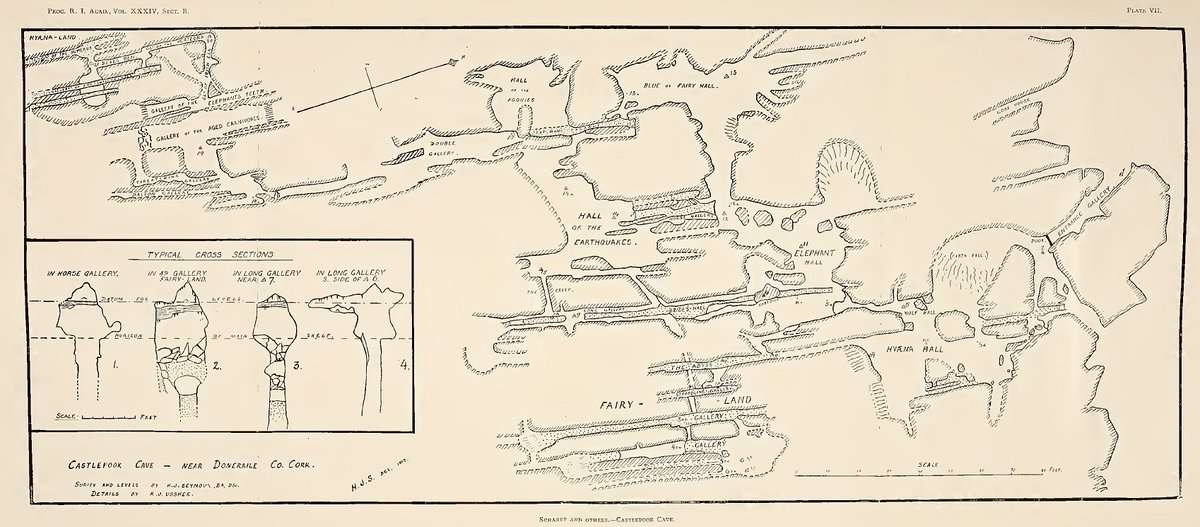


27/n Thankfully, Ussher spent time writing up his excavation notes from various caves and we can re-investigate these now, including the caves themselves. We are fortunate to follow in his footsteps into the caves, and originally it was thought that all he removed all cave
28/n sediments from every cave he excavated, but as we are finding in our current research projects, thankfully, this is not the case. Though he did cover a lot! We are also funded by @RIAdawson to continue cave excavations and exploration since 2015.
29/n We conduct cave excavations using standard archaeological practices, recording, cataloging, photography, drawing, slowly removing each layer using an archaeological trowel, revealing different layers in the cave sediments (if present), and insight into the past. Ussher left
30/n a good legacy and now we continue, Ballynamintra cave was excavated 2015-2018 led by Dr Richard Jennings (Liverpool John Moores University) and Cóilín Ó Driescoil (now National Monuments Service). A major publication paper in now in preparation... 
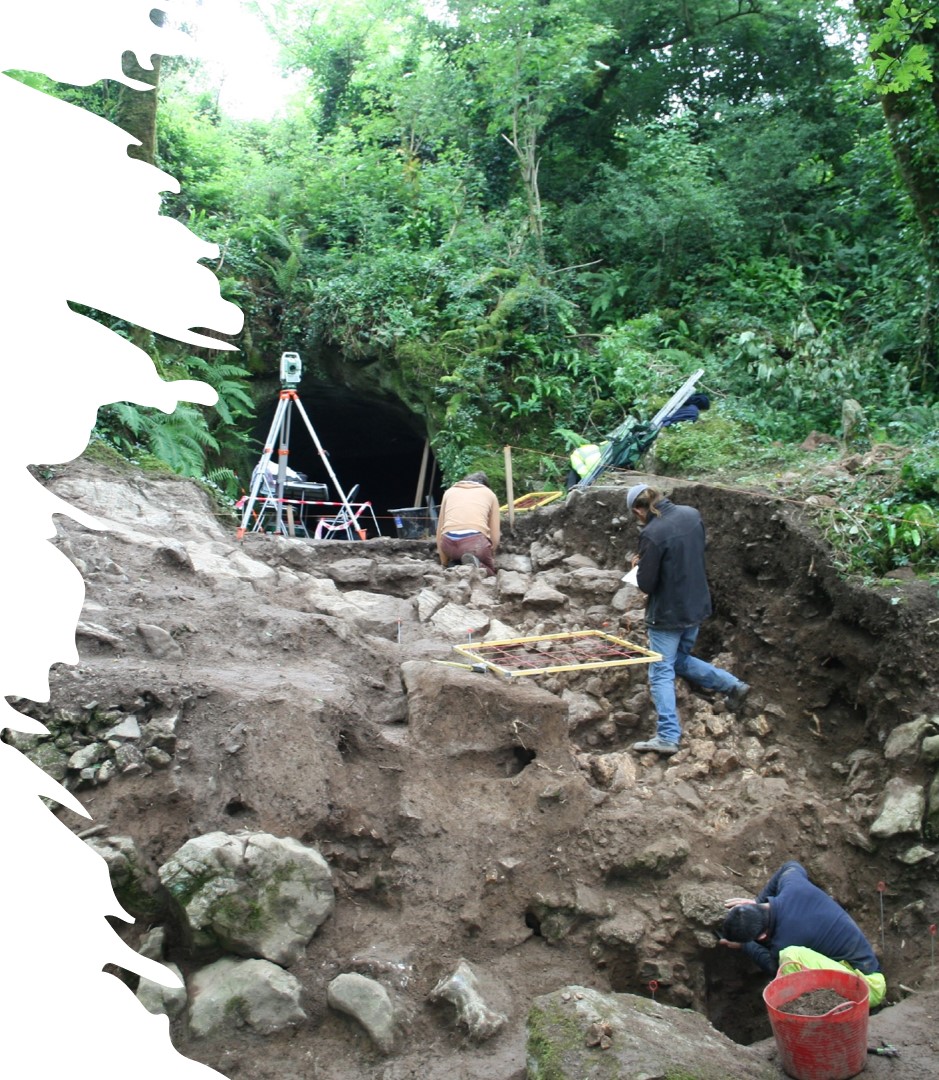
31/n... and I can't spoil what we found, but a certain small canid species was identified and dated to about 11,000 years ago, which will no doubt engage discussions on 'native' vs non-native species debates yet again and their protection status in Ireland. Later in 2023.
32/n We had our first season at Castlepook cave in May/June 2022, & we are working with the @CavingIreland Cork Speleological Group members, who provide all health & safety aspects to our cave excavations. They provide crucial assists to allow us safe pass in the cave & to work. 







33/n We worked in a new part of Castlepook cave that wasn't discovered by Ussher and his team. But rather was discovered by Jerry Ahearne (photograph) and members of the Cork Speleological Group in 1973. 
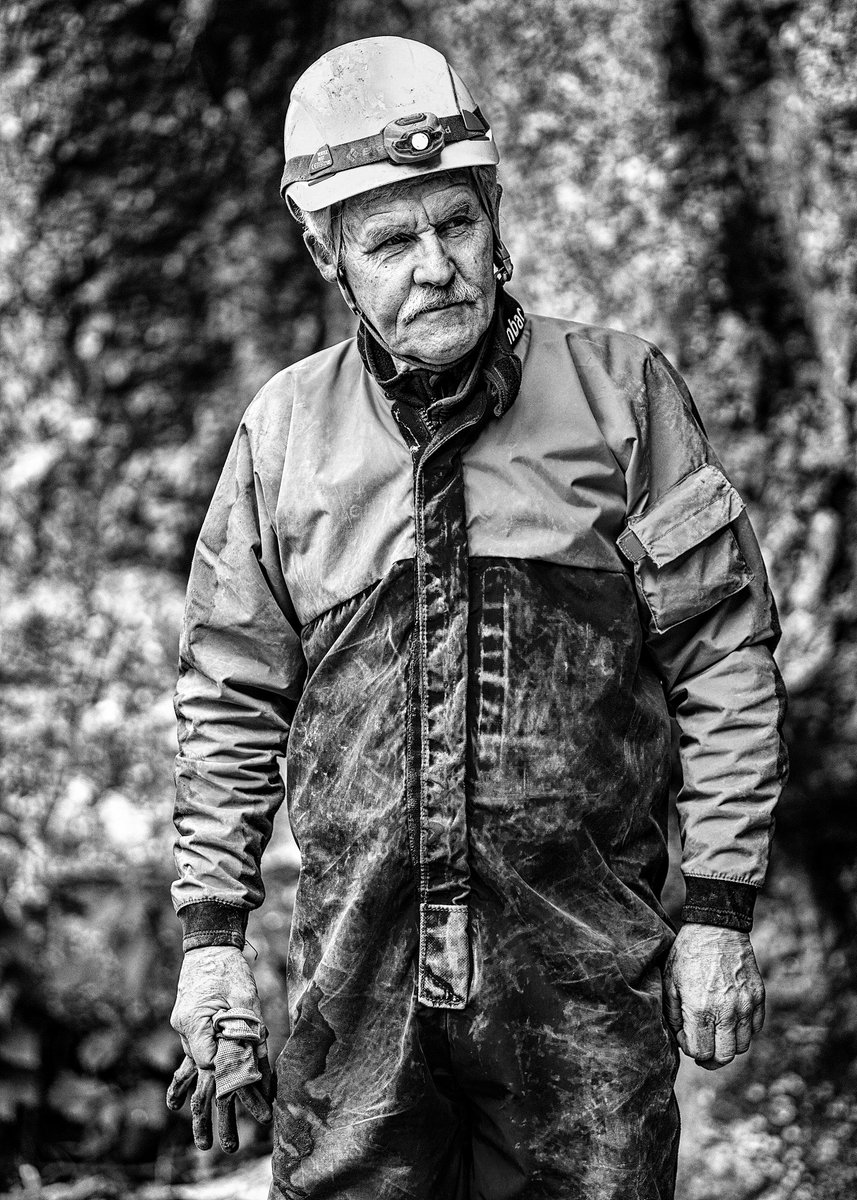
34/n Other members of the Cork Speleological Group who ensured our safety within the cave and gave crucial training outside the cave too, must be acknowledged. We are most grateful to our continued collaboration going forward. Stan, Brian, Terry, Michael, Jerry and Colin 

35/n We did find various animal bones from our 2022 season at Castlepook cave, some recent intrusions but also some older pre/post ice age animals - brown bear, reindeer, Arctic lemming, possibly wild cat, and some birds. But we need to get these dated to know when they were here
36/n We shall return to Castlepook cave later this year again. & we are still finding bone surface finds within the cave, including these reindeer bones in the 'Move or Breathe Passage' (as you cannot do both these at same time, it's that tight!). *warning tight confined space* 
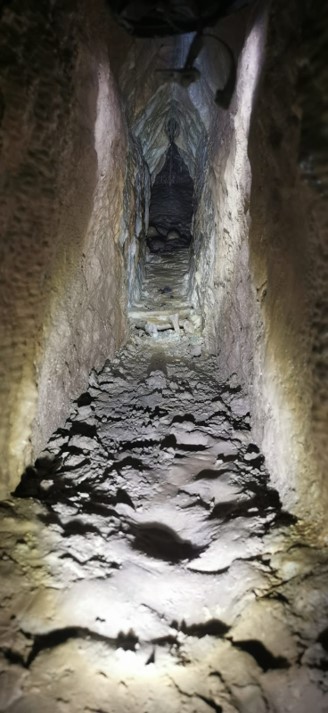
37/n Short video of retrieving the reindeer bones in previous tweet, from very narrow tight passage in Castlepook cave - Move or Breathe Passage. *warning, tight narrow confined passage*
38/n We return to Castlepook cave in September of this year to conduct geophysical survey in the adjoining farmer's field - like a x-ray of the ground - to find natural entrances of the cave that were infilled in the past 1000s of years. Gratefully funded by @RIAdawson & we will
39/n also be visiting and exploring at least 3 more caves in Waterford and Cork to determine likely potential of cave sediment being present and any animal bone remains. First two weeks in April saw us as Kilcolman cave, excavating for first time (again funded by @RIAdawson) 

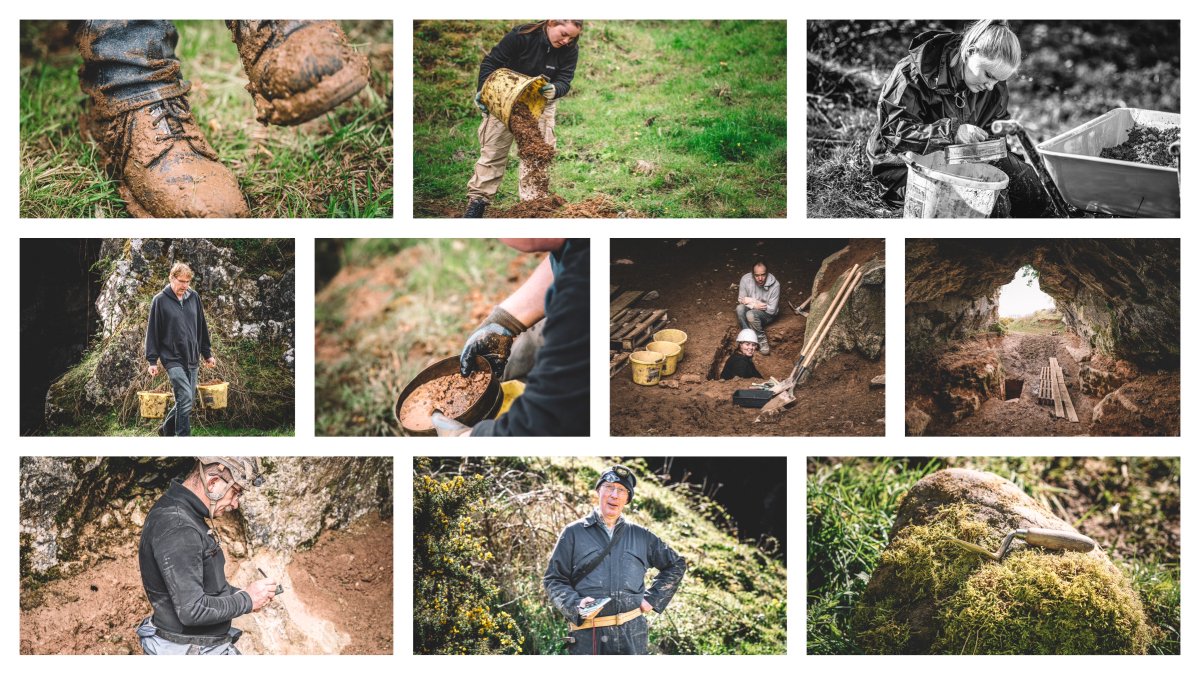

40/n While we did not discover any ancient bones at this cave, we did see evidence in the rocks of water flooding events, which will feed into our eventual model of the ice age sheet advancing and retreating across Ireland.
41/n So to round up tonight, although Ussher and others used 'old' methods to excavate caves of its sediments and animal bones, apart from updates, these methods have been refined but we can still learn so much from the way they excavated originally. We explore this more next
42/n year with more analysis of the old excavations. But in the meantime, we have new caves to explore, find bones and sediment. Also we take cave sediment for ancient DNA analysis and pollen analysis. All data feeding into us knowing more about Ireland's palaeo-environment and
43/43 the changes the palaeo-ecoystems have gone through. So I leave you with the view across my cave bone desk in the Museum stores, as many a evening I left it after a long day's work. Tomorrow we explore how/why bones got into caves. Hope ye can join me & the #IrishCaveBones 
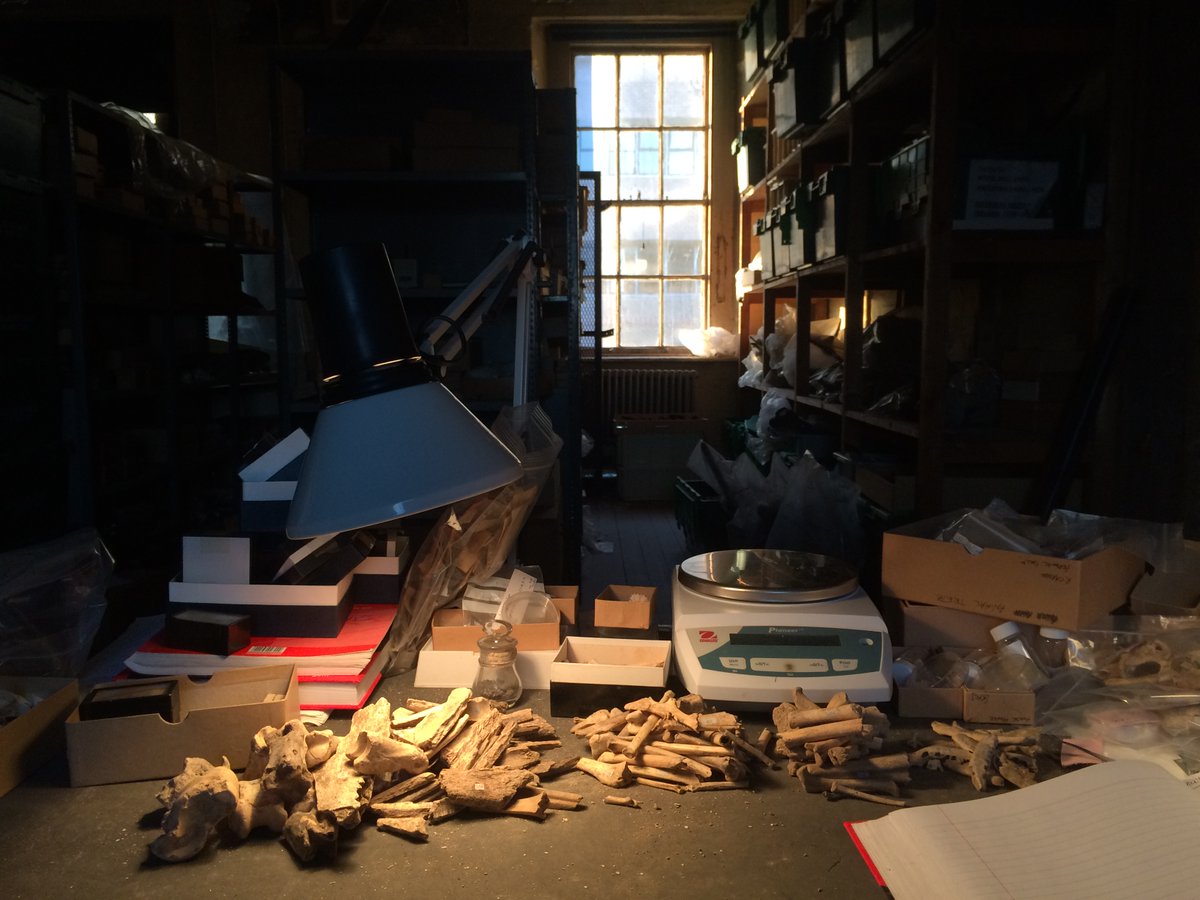
• • •
Missing some Tweet in this thread? You can try to
force a refresh

 Read on Twitter
Read on Twitter

